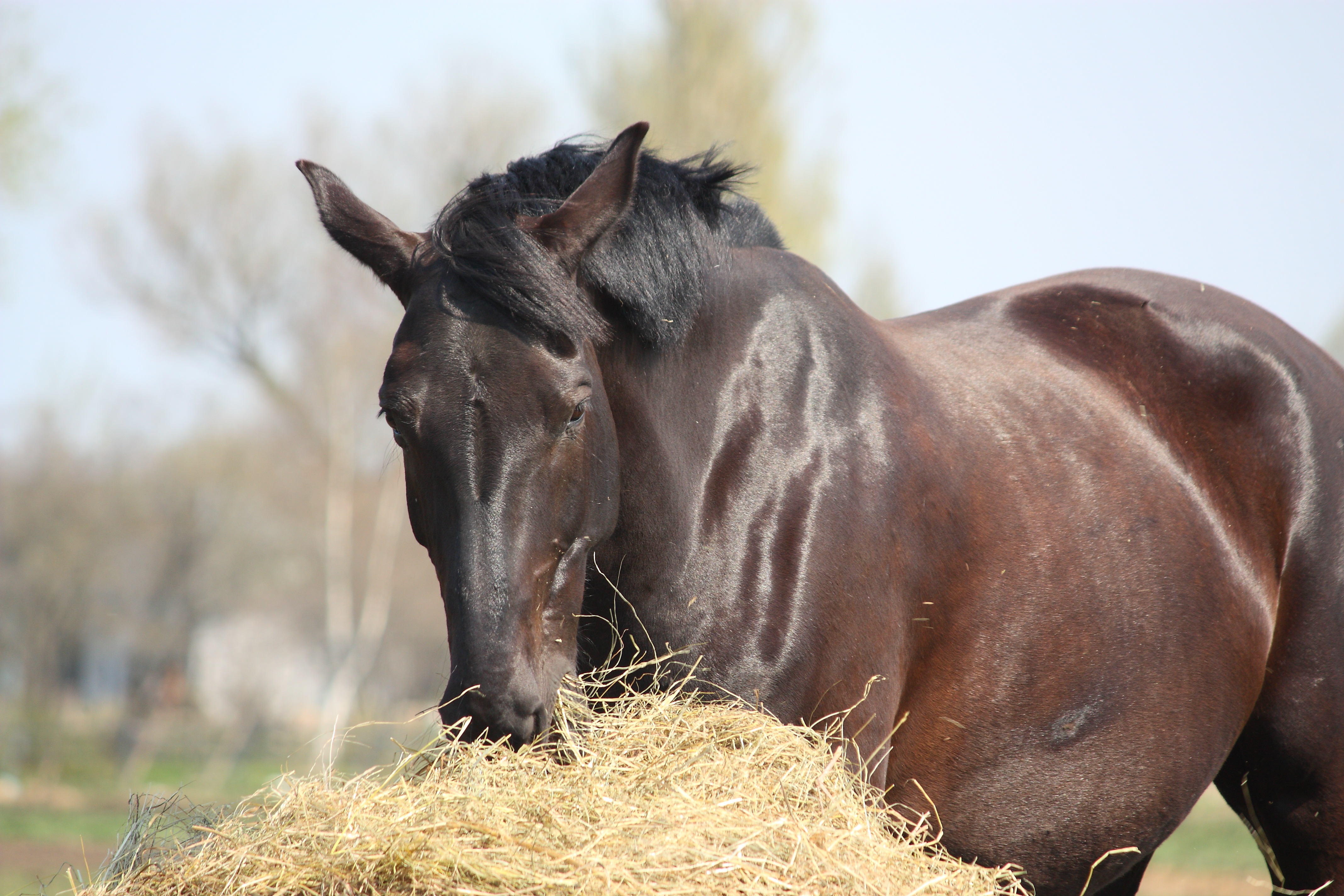Australian researchers have developed a feeding system that helps horses lose weight by adding exercise to mealtime.

The “dynamic feeder” is designed to compel horses to walk continuously to access hay. The feeder has sliding doors on each side that are closed and opened alternately to allow access to an internal hayrack for predetermined periods of time. An electronic timer closes one door while simultaneously opening another on the opposite side of the feeder, requiring the animal to walk around the structure to access hay. A segment of fence can also be put in place to increase the distance the horse must walk to reach the open door.
To evaluate the effects of their system, researchers at the Queensland University of Technology conducted an experiment using eight mature ponies with body condition scores between 5 (moderate flesh) and 9 (obese).
For one three-month period, the ponies were fed in a paddock with the dynamic feeder turned “on,” meaning the doors on each side were opened and closed alternately on a five-minute cycle. Also, the ponies had to walk around a fence measuring about 20 meters (just under 22 yards) to reach the open door and access the hay.
Click here to learn why obesity isn’t necessarily a signs of laziness in horses.
“The ponies had constant access to the feeders so were always allowed to finish their meal,” explains Melody de Laat, DVM. “They used them for approximately two hours twice a day, which is how long it took them, on average, to eat their meal. So about three to four hours total each day.”
For a second three-month period, the ponies were fed with the dynamic feeder turned “off,” meaning that the door on one side remained open and the ponies had continuous access to the hay. This enabled the researchers to analyze the effects of the feeder, rather than just the diet. Throughout the study, the ponies were fed 2 percent of their body weight in hay, along with a vitamin supplement.
In addition, GPS trackers were used determine how far the ponies walked during both study periods, taking measurements over three 12-hour periods. “When the feeders were operating, the ponies on average walked about 3 to 4 kilometers per day [roughly two to 2 1/2 miles], with most of that over the four-hour feeding period,” says de Laat. “This may not sound like a lot but very few ponies would voluntarily move this much throughout the day.” Indeed, when the feeder was on, the ponies walked almost four times as far as they did when the feeder was turned off.
Measurements taken at the start and end of each study period showed that the average BCS of the ponies decreased from 6.53 to 5.38 when the feeders were in use and their cresty neck scores decreased from 2.6 to 1.63. There was no change in either of these measurements when horses were fed the same diets with the feeders turned off. Dynamic feeding also led to a 4.95 percent decrease in body fat.
The dynamic feeder isn’t available commercially, but de Laat says a committed owner could, theoretically, replicate these results. “I believe that it is the total amount of exercise that may be important, perhaps not the speed,” she says. “So possibly, longer periods of walking may be more valuable than a half-hour ride at a faster pace. I guess owners could replicate this system by longeing their ponies for longer at the walk or by taking them for a walk (much like you walk the dog), but you’d have to go for three or four hours a day.”
Reference: “Sustained, low-intensity exercise achieved by a dynamic feeding system decreases body fat in ponies,” Journal of Veterinary Internal Medicine, September 2016
This article first appeared in EQUUS issue #472,
Don’t miss out! With the free weekly EQUUS newsletter, you’ll get the latest horse health information delivered right to your in basket! If you’re not already receiving the EQUUS newsletter, click here to sign up. It’s *free*!








